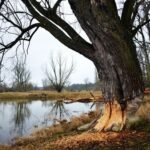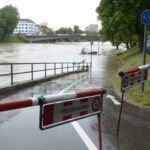
Homeowners in areas where wildfires are common are caught in the crossfire of two elemental forces—fire and water—each of which poses a distinct threat to their properties. While wildfires can devastate landscapes with their unrelenting flames, the aftermath frequently brings with it an unexpected foe: water damage.
This comprehensive guide is a ray of hope, providing homeowners with an easy-to-follow road map for strengthening their homes against the heat and possible water damage that ensues. Within the complex web of home safety, this guide lays out several tactical steps, such as knowing the dynamics of wildfires and strengthening your home’s structure, enabling you to maneuver through the difficulties of defending your home in locations vulnerable to these two threats.
Picture a preventative strategy that not only protects your house but also builds a safety net against the unanticipated outcomes that frequently accompany wildfires as you go through this guide. We explore important topics in each section, from emergency preparation plans that guarantee prompt evacuation to landscaping tactics that establish a defensible space, all of which are designed to equip homeowners with the information they need to protect their houses against the dynamic interaction of fire and water.
This guide shines as a reliable ally in the face of uncertainty, offering not only tactics but also a thorough comprehension of the complex relationship between water damage and wildfires, eventually clearing the path for sturdy and well-protected dwellings in wildfire-prone locations.
See also our post on How to Clean and Maintain Your Outdoor Fire Pit: Cozy Evenings
What to Know About Wildfire Dynamics
Grasping Fire Behavior
Comprehend the behavior of wildfires, recognizing their ability to travel quickly and unpredictably due to factors such as wind speed, terrain, and fuel sources.
Awareness of Ember Showers
Understand the threat of ember showers, where burning embers carried by the wind can ignite spot fires, presenting a risk to homes even before the main fire arrives.
Knowledge of Firebreaks
Familiarize yourself with the concept of firebreaks—cleared areas devoid of flammable materials—to impede the progress of wildfires and create a buffer zone around your property.
Impact of Slopes
Acknowledge the increased risk of wildfires on slopes. Fire tends to travel more rapidly uphill, making properties on elevated terrain more susceptible to its advance.
Recognizing the Ember Zone
Identify the ember zone, an area around your home where airborne embers are likely to land. This zone demands heightened attention to reduce the risk of ignition.
Fire-Resistant Landscaping
Creating Defensible Space
Establish a defensible space around your home by clearing combustible vegetation. Maintain a minimum clearance of 30 feet, and consider expanding this zone to 100 feet for increased protection.
Appropriate Plant Selection
Choose fire-resistant plants for landscaping, avoiding highly flammable vegetation. Opt for native, drought-resistant species that are less prone to ignition.
Maintaining Vegetation
Regularly maintain and trim trees, shrubs, and grass to reduce fuel for potential wildfires. Remove dead or dry vegetation that could easily catch fire.
Strategic Plant Placement
Place fire-resistant plants strategically, considering their distance from structures and their potential impact on fire behavior. Ensure proper spacing to minimize the risk of flames spreading.
Firebreaks and Greenbelts
Implement firebreaks and greenbelts as part of your landscaping strategy. These features act as barriers, hindering the advancement of wildfires and providing additional protection.
See also our post on How to Save Valuable Artwork from Water Damage
Exterior Home Preparations
Roof Maintenance
Opt for a Class A fire-rated roofing material to enhance fire resistance. Regularly clean roofs and gutters from debris, reducing the risk of ember ignition.
Ember-Resistant Vents
Install ember-resistant vents to prevent ember entry into the attic space. These specialized vents have fine mesh screens that block embers while allowing ventilation.
Non-Combustible Siding
Consider non-combustible siding materials for your home exterior. Options like stucco, metal, or fiber cement provide an added layer of defense against flames.
Sealed Entry Points
Ensure all openings, such as windows and doors, are tightly sealed. Ember-resistant screens and weather stripping help prevent ember intrusion and water damage.
Safe Storage Practices
Store combustible materials away from the home. Keep firewood, propane tanks, and other flammable items at a safe distance, reducing the risk of ignition.
Water Supply and Infrastructure
Fire Hose Accessibility
Install fire hoses around your property for emergency use. Ensure they are easily accessible to firefighters and equipped with adjustable nozzles.
Generator and Pump Preparedness
Have a generator and water pump on standby for potential power outages. These tools are vital for maintaining a water supply during firefighting efforts.
Water Storage Tanks
Invest in water storage tanks with a capacity sufficient for firefighting needs. These tanks can serve as a critical resource for firefighters combating flames near your property.
Well-Maintained Hydrants
Regularly inspect and maintain nearby fire hydrants. Ensure they are operational, and their location is clearly marked for swift access by firefighting teams.
Pond or Pool Utilization
If feasible, consider creating a pond or utilizing an existing pool as an additional water source. These reservoirs can aid firefighting efforts and protect your home.
See also our post on How to Prevent Water Damage to Furniture: A Comprehensive Guide
Emergency Preparedness and Evacuation
Evacuation Plan
Develop a comprehensive evacuation plan for your family. Identify multiple evacuation routes, and ensure all family members are familiar with the procedures.
Emergency Kit
Assemble an emergency kit containing essential supplies, such as water, non-perishable food, medications, important documents, and first aid items.
Communication Strategy
Establish a communication strategy with neighbors and local authorities. Stay informed about wildfire updates through reliable sources and community alert systems.
Vehicle Preparation
Keep vehicles fueled and ready for evacuation. Maintain them in good working condition to ensure reliable transportation during emergency situations.
Safe Meeting Points
Determine safe meeting points for family members in case of separation during evacuations. These points should be easily accessible and known to all family members.
Post-Wildfire Water Damage Control
Immediate Inspection
After a wildfire, conduct an immediate inspection of your property. Identify areas prone to water damage, such as compromised roofs, broken windows, and damaged siding.
Roof Tarping
If the roof is damaged, tarp it immediately to prevent water infiltration. Securely fasten tarps to provide temporary protection until permanent repairs can be made.
Window and Door Sealing
Seal damaged windows and doors to prevent water from entering. Use plywood, plastic sheeting, or other materials to cover openings until proper repairs can be carried out.
Gutter Clearing
Clear gutters of debris to ensure proper drainage. Blocked gutters can lead to water pooling on the roof, increasing the risk of water damage.
Moisture Removal
Use dehumidifiers and fans to remove excess moisture from the interior. Prompt moisture removal is crucial for preventing mold growth and structural damage.
Community Engagement and Fire-Adaptive Planning
Community Collaboration
Engage with your local community to collectively develop fire-adaptive plans. Collaborate on strategies that enhance overall neighborhood resilience against wildfires.
Fire-Adaptive Communities
Support and participate in programs promoting fire-adaptive communities. These initiatives focus on community-wide efforts to reduce wildfire risks and enhance preparedness.
Neighborhood Watch Programs
Establish or join neighborhood watch programs focused on wildfire prevention. These programs foster awareness and coordination among residents to enhance community safety.
Training and Workshops
Participate in training sessions and workshops organized by local authorities or fire departments. These events provide valuable insights and practical skills for wildfire preparedness.
Public Awareness Campaigns
Contribute to public awareness campaigns about wildfire risks and preventative measures. Educate your neighbors about the importance of creating fire-resilient communities.
See also our post on Water Damage Restoration Guide: How to Restore Property After a Disaster
Conclusion
In the face of wildfire threats, protecting your home requires a multi-faceted approach that combines preventative measures, emergency preparedness, and community engagement. This guide has endeavored to provide a detailed roadmap for safeguarding your home from water damage in wildfire-prone areas, offering accessible and practical strategies for every step of the journey. As you fortify your property against the flames, may the resilience embedded in these measures echo through your community, creating a tapestry of safety and preparedness that stands strong against the ever-present wildfire risk.






